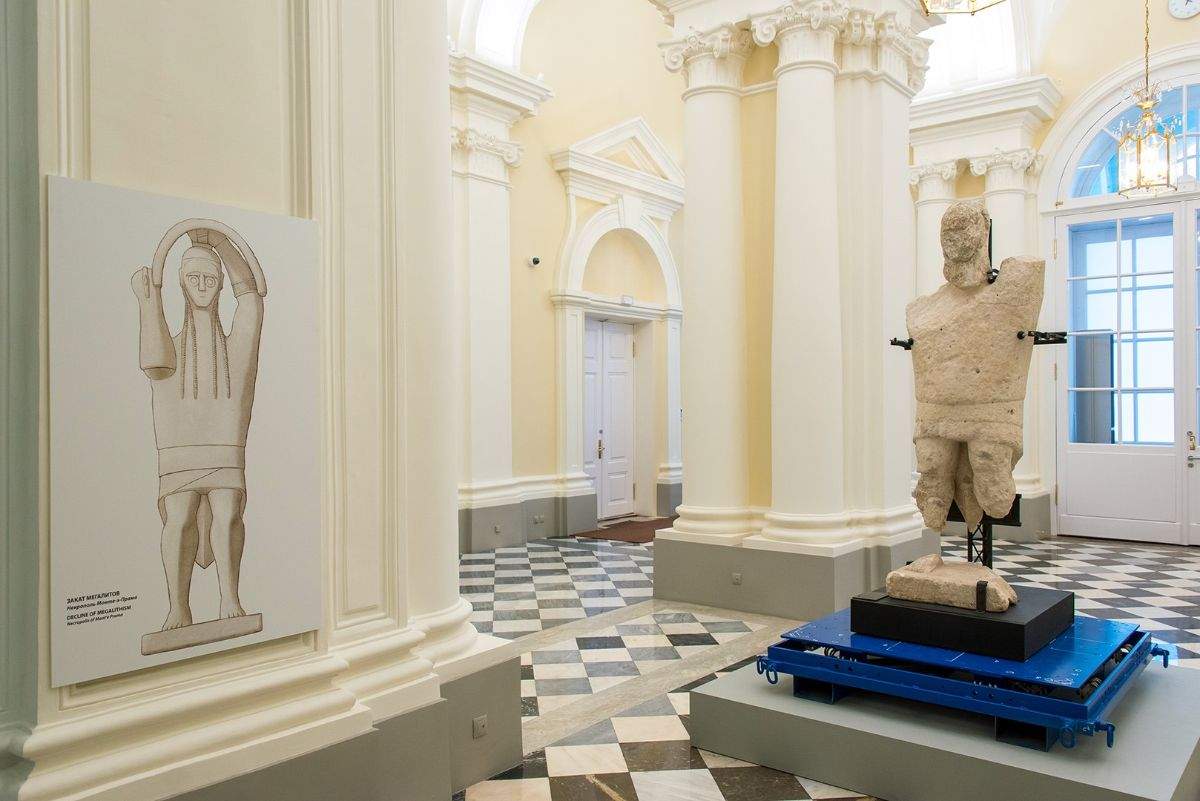Sardinia traveling to Russia with 200 artifacts from its museums (and even a giant from Mont'e Prama)
The European tour of the exhibition Sardinia Megalithic Island continues. From menhirs to nuraghi: stories of stone in the heart of the Mediterranean that began on June 30, 2021, and takes one of the giants of Mont’e Prama, the grandiose Sardinian Iron Age statues discovered in the 1970s and recently at the center of a case over their management, around Europe. After the first stop, which took place in Berlin at the National Museum for Prehistory and Protohistory (96,000 total visitors), now the exhibition lands in Russia, at the Hermitage: 200 artifacts from the archaeological museums of Cagliari, Nuoro and Sassari are on display, including one of the great Mont’e Prama warriors. Then, once the Russian exhibition is over (closing date is January 16, 2022), it will be the turn of Thessaloniki (at the Greek city’s National Archaeological Museum, February 11 to May 15, 2022) and Naples (at the National Archaeological Museum in Naples, June 10 to September 11, 2022): Sardinia, in essence, will not see its finds before 2022.
Sardinia Megalithic Island is an “exhibition-event” (so the official presentations) promoted by the Region of Sardinia-Assessorato del Turismo, Artigianato e Commercio (part of an articulated cultural tourism project financed by the European Union) together with the National Archaeological Museum in Cagliari, the Regional Museums Directorate of Sardinia and the Museums hosting the exhibition - National Museum for Prehistory and Protohistory in Berlin, the State Hermitage Museum in St. Petersburg, the National Archaeological Museum in Thessaloniki and the MANN National Archaeological Museum in Naples. The exhibition has the patronage of MAECI and MIC, the collaboration of the Fondazione di Sardegna and the general coordination of Villaggio Globale International. The exhibition, which in the Russian leg is also supported by the Italian Embassy in Russia and the Italian Cultural Institute, also received the Medal of the President of the Republic.
of this exhibition," said Michail Piotrovsky, Director General of the State Hermitage Museum, “are written magical words like Nuraghi, betili, Tombs of Giants-all words that seem to be taken from a fairy tale. If we talk about Stonehenge which is famous all over the world, it is an infant compared to the things we can see today, which represent a paradigm of ancient civilization, here represented by the dialogue between stone and bronze, between the giant lithic sculpture and the refined small bronze figures, a dialogue that will be taken up by later civilization, including the Greek and Greco-Roman. With its international journey, the exhibition is actually part of a complex vast project called ’Europe without Borders’ that tells of ancient civilizations and connects the history of early ancient Europe to Europe as we know it now. Even in Russia, in the Caucasus and the Black Sea, there are vestiges of similar civilizations - remains of towers, betili, fortresses - that tell of the same culture that unites us with the European tradition.”
The Italian Ambassador to Moscow, Giorgio Storace, emphasized how this initiative has given him “a month after taking office in Moscow, the privilege of renewing the ties of friendship and cooperation with St. Petersburg and with this very prestigious museum, which represents the point of reference throughout the world for the promotion of art and which for years has been giving life to projects of the highest level with the collaboration of our Embassy, the Consulate General and the Italian Cultural Institute, which invite to discover the rich artistic, historical and archaeological heritage of our beautiful Italy and also show the inexhaustible attraction that links Italian and Russian culture. ”The exhibition dedicated to the ancient civilizations and cultures of Sardinia,“ he continued, ”magnificently telling stone history in the heart of the Mediterranean also allows us to convey in Europe a concept linked to Italy, namely the constant union that all our regions express between scenic beauty and historical-artistic richness, between cultural experience and the experience of traditions and gastronomy. We are betting on the future."
“With great pride and pleasure,” said Sardinia’s regional councillor for culture, Quirico Sanna, who was also present at the Winter Palace for the opening, “we present the archaeological heritage of the land of Sardinia to the world. We hope that this collaboration between Sardinia and the Hermitage Museum, one of the most prestigious and important at the international level, will lead to an increasing knowledge of the history and culture of this wonderful land of ours.”
“The second stage of the exhibition, hosted in the very prestigious Hermitage venue,” commented Francesco Muscolino, regional director of the Museums of Sardinia and director of the National Archaeological Museum in Cagliari, “confirms itself as an excellent example of fruitful collaboration between the Ministry of Culture, the Region of Sardinia and major international museums. The Ministry’s technical-scientific officials deserve particular credit for having drafted, in collaboration with colleagues from other host museums and other scholars, the complex scientific project of the exhibition, which is also accompanied by a ponderous catalog.”
Pictured: the giant on its way to St. Petersburg
 |
| Sardinia traveling to Russia with 200 artifacts from its museums (and even a giant from Mont'e Prama) |
Warning: the translation into English of the original Italian article was created using automatic tools. We undertake to review all articles, but we do not guarantee the total absence of inaccuracies in the translation due to the program. You can find the original by clicking on the ITA button. If you find any mistake,please contact us.




























